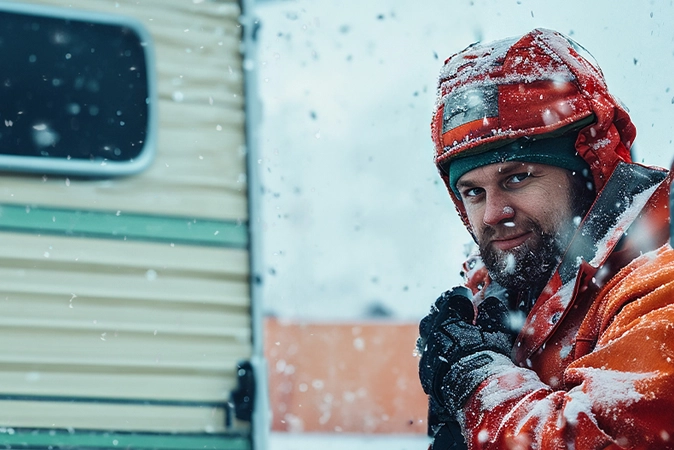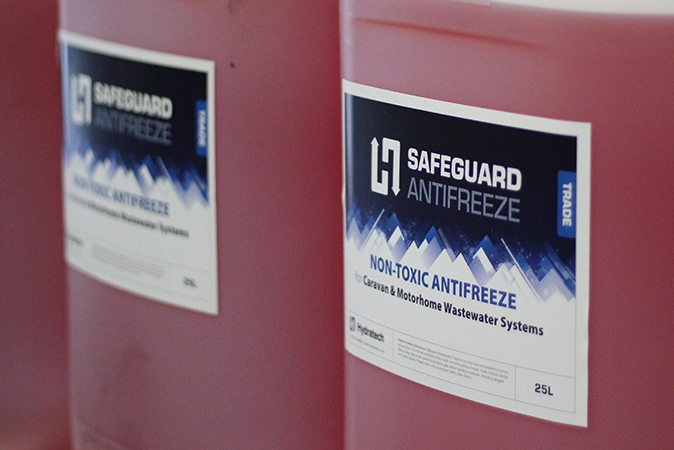Step 1: Drain the Fresh Water System
- Turn off the pump and disconnect any external supply.
- Open all taps (including the shower) and leave them midway between hot and cold to allow air circulation.
- Flush the toilet to clear its flush tank.
- Remove external drain plugs so trapped water can escape.
Step 2: Empty Tanks and Appliances
- Drain the onboard water heater and storage tanks completely.
- Use the dedicated drain valve (check your handbook for the exact location).
- Remove and store any water filters separately for winter.
- Run the pump briefly to push out remaining water, but avoid running it dry.
Step 3: Protect with Antifreeze
Even a small amount of water can freeze and cause damage. To protect your system:
- Always use a caravan-safe, non-toxic antifreeze (never car engine antifreeze).
- Consider Safeguard Antifreeze by Hydratech. It's been specifically formulated for caravan, motorhome and marine craft wastewater and hydronic heating systems. Non-toxic Safeguard is industry proven to deliver superior winter protection and contains inhibitors to prevent internal corrosion, scaling and biological fouling.
- Add antifreeze to:
- Sink and shower waste traps (to protect U-bends)
- Toilet cassettes (to stop seals drying out)
- For extra protection, circulate a diluted solution through your pipework, following the product guidelines.
- If you have wet heating system, the heat transfer fluid is designed to remain in the system all year round, if the anti-freeze solution is maintained in accordance with the manufacturer’s requirements. Trusted by leading park operators, Safeguard Heating provides comprehensive winter protection for hydronic 'wet' heating systems.
Step 4: Reduce Damp Risk
- Leave taps open and cupboard doors ajar for ventilation.
- Remove bedding and soft furnishings, or store them at home.
- Place moisture traps inside the caravan.
- Use a breathable cover to protect from the elements without trapping damp.
Step 5: Carry Out Ongoing Checks
- Inspect your caravan occasionally during winter, especially in very cold spells.
- Top up antifreeze in waste traps if needed.
- A quick check every few weeks ensures continued protection.
Conclusion: Protecting Your Caravan for the Season Ahead
Caravan winterization doesn’t take long, but it saves you from the hassle and expense of frost-related damage. By draining down fully, ventilating properly, and using a specialist product like Safeguard Antifreeze, you’ll keep your caravan safe through the winter. That way, when the warmer weather arrives, your caravan will be dry, damage-free and ready for your next adventure.















